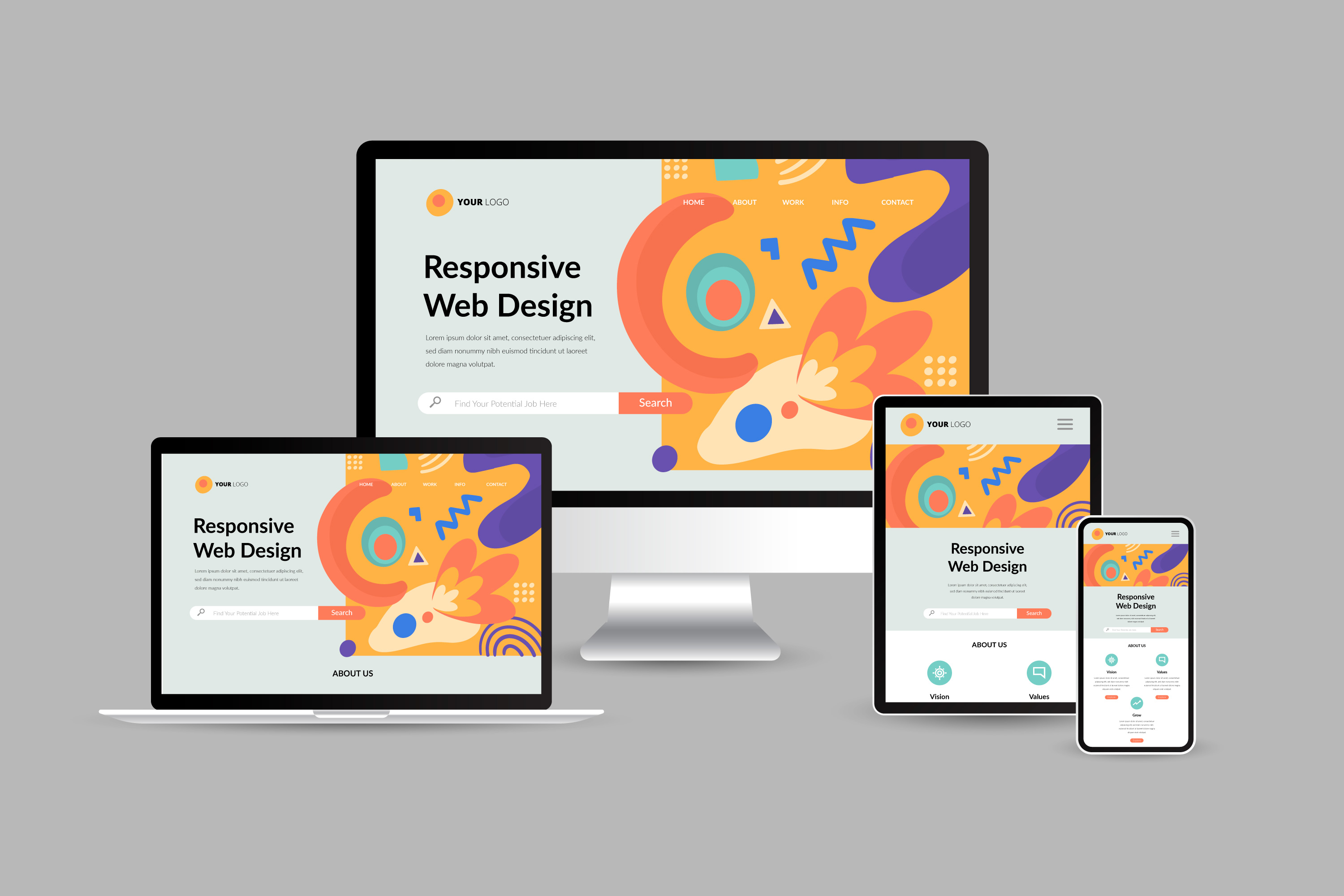The Ultimate Guide to Modern Internet Site Style Trends
In the ever-evolving digital landscape, modern-day site layout fads play an important function in forming individual experience and interaction. From the rise of minimal style concepts that prioritize simplicity to the effect of bold typography in specifying brand name identification, each component contributes to a cohesive on the internet existence. The focus on responsive and mobile-first methods, along with cutting-edge microinteractions, better improves usability. The expanding emphasis on sustainable internet design methods mirrors a dedication to environmental responsibility. These fads jointly increase crucial concerns regarding the future of efficient web design and what it implies for customers and businesses alike.
Minimalist Design Concepts
Minimal style concepts stress the idea that much less is extra, advocating for simplicity and performance in visual interaction. This approach remove unnecessary components, focusing rather on essential parts that communicate the designated message successfully. By focusing on quality, minimalist style boosts individual experience, enabling visitors to navigate web sites easily.
Core tenets of minimalist layout consist of making use of enough white area, which develops a sense of balance and organization. This negative room not just guides the audience's attention to crucial elements but also fosters a soothing visual environment. Furthermore, a limited color palette is frequently used, making use of monochromatic systems or soft shades to preserve visual cohesion and prevent frustrating the individual.
Typography plays a crucial role in minimal design, where understandable typefaces are chosen for their simpleness and efficiency in communicating web content. Graphics and photos are used moderately, ensuring that they serve a purpose instead of distract from the overall message. Eventually, minimal design concepts grow a focused atmosphere that motivates customers to engage with the material, improving the general performance of modern-day web site layout. This trend shows an expanding recognition for thoughtful, user-centric aesthetic appeals in electronic spaces.
Vibrant Typography Options
Accepting vibrant typography options has actually become a specifying attribute of contemporary web site style, as it successfully captures interest and shares solid messaging. Designers are significantly making use of typography not merely as a functional component yet as a vital visual component that boosts the overall visual and customer experience.

Additionally, the association of vibrant typography with minimalist design concepts permits striking contrasts, boosting readability while maintaining visual allure. Making use of whitespace around strong text additionally emphasizes its relevance, making certain that the message resonates with the audience.
As digital landscapes become more competitive, leveraging strong typography enables brand names to differentiate themselves and leave an enduring impression. The mindful option of typefaces and their application can evoke feelings, establish tone, and drive action, making bold typography an indispensable tool in contemporary website layout. Inevitably, it is an effective method to boost storytelling and guarantee that vital messages are not only seen however likewise really felt.
Mobile-first and receptive Design
Receptive and mobile-first layout has become a vital concept in modern-day website advancement, mirroring the enhancing dependence on mobile phones for accessing on-line material. As individual behavior changes in the direction of mobile browsing, designers have to focus on developing experiences that adjust seamlessly across various screen sizes and resolutions.
A receptive design makes certain that a website immediately changes its layout, pictures, and performance based on the tool being used. This method improves customer experience by giving constant navigating and readability, regardless of whether the visitor gets on a smartphone, tablet, or desktop computer system. Mobile-first design supporters for creating websites initially for smaller sized screens, ultimately scaling up to bigger displays. This technique motivates an extra effective and structured layout procedure, concentrating on crucial content and functionality initially.
Applying responsive and mobile-first principles not only satisfies user my link preferences but also lines up with seo (SEARCH ENGINE OPTIMIZATION) practices. Major internet search engine, like Google, prioritize mobile-friendly sites in their positions, making it imperative for services to embrace these design approaches. In an affordable digital landscape, accepting mobile-first and responsive layout is not simply a choice; it is vital for anonymous making sure accessibility and engagement with a diverse target market.
Engaging Microinteractions
Microinteractions play a pivotal duty in enhancing customer involvement and total web site experience, specifically in the context of receptive and mobile-first design. These refined layout aspects provide prompt feedback to individuals, making interactions much more enjoyable and instinctive. Examples consist of button computer animations, alert informs, and packing indicators, which not only overview customers however also create a feeling of link with the user interface.
Integrating interesting microinteractions can substantially enhance use by lowering cognitive tons. When customers get aesthetic or auditory responses upon doing actions, such as clicking a switch or submitting a form, they really feel extra confident in their choices. This cultivates a smoother navigating experience, eventually boosting user retention.

As web site style patterns remain to progress, the value of microinteractions can not be overemphasized. They work as the refined yet effective touchpoints that transform normal interactions right into remarkable experiences, therefore raising the overall performance of contemporary website design.
Sustainable Internet Style Practices
Lasting website design techniques are coming to be increasingly important as the electronic landscape expands and environmental issues climb. Developers and developers are identifying their responsibility to develop sites that not just offer individual requirements but likewise decrease environmental effect. This approach encompasses several essential strategies.
Firstly, optimizing energy consumption is paramount. Internet sites must be made to fill swiftly and efficiently, which minimizes web server energy usage and improves customer experience. Methods such as picture compression, reducing HTTP demands, and making use of modern-day coding practices contribute significantly to this goal.
Second of all, picking green organizing carriers is essential - website visit their website design. Lots of hosting firms are currently powered by eco-friendly power sources, making it possible for websites to operate in an extra sustainable manner. This selection mirrors a dedication to reducing carbon impacts
Additionally, embracing a minimal design can enhance sustainability. Less aspects on a page cause much less information transfer, which not only accelerates filling times but likewise conserves resources.
Lastly, advertising electronic accessibility guarantees that internet sites reach a wider target market without unneeded bloat, aligning individual experience with ecological duty. By integrating these sustainable methods, web developers can contribute favorably to both customer engagement and the earth's wellness.
Final Thought
In recap, modern site style trends stress the combination of minimal principles, strong typography, and responsive design to boost individual experience. Adopting these patterns is vital for creating impactful electronic experiences that resonate with customers in an increasingly affordable on-line landscape.
In the ever-evolving electronic landscape, modern-day site layout fads play a vital duty in shaping individual experience and involvement. By prioritizing clarity, minimalist layout enhances customer experience, permitting visitors to browse websites easily.
Ultimately, minimalist design principles grow a focused setting that motivates individuals to engage with the material, boosting the overall effectiveness of modern website style.Microinteractions play an essential role in enhancing customer interaction and general internet site experience, specifically in the context of mobile-first and receptive design.In summary, contemporary site design patterns stress the integration of minimal principles, vibrant typography, and receptive style to enhance user experience.
 Kirk Cameron Then & Now!
Kirk Cameron Then & Now! Michael Bower Then & Now!
Michael Bower Then & Now! Ross Bagley Then & Now!
Ross Bagley Then & Now! Jenna Von Oy Then & Now!
Jenna Von Oy Then & Now! Erik von Detten Then & Now!
Erik von Detten Then & Now!